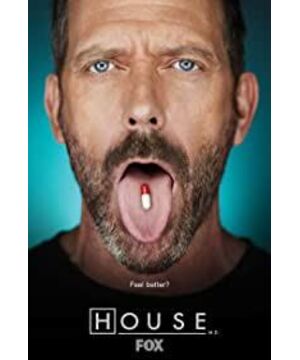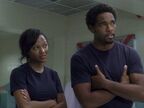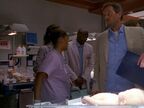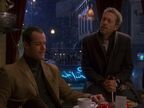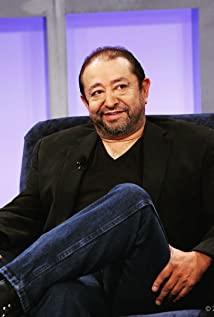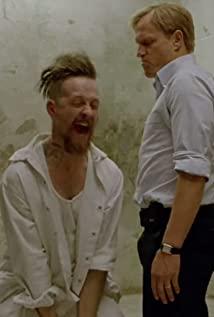As an HR person with occupational diseases, I plan to analyze the system of the demon team headed by Dr. House and help them diagnose the team's operation. Let's use a Hay's classic team model.
In a seemingly normal hospital affiliated with a famous university, Dr. House leads a very enchanting department called a department that specializes in diagnosing diseases that cannot be diagnosed by other doctors. (Judging from my limited experience in dealing with hospitals in China, I doubt the authenticity of this position. But this is negligible. Anyway, American dramas can be viewed as sci-fi movies.) Dr. House led a team of three The members are two men and one woman. According to statistics from the movies I have watched so far, their performance is quite good. Of course, death is inevitable, but almost no diagnosis fails.
Team element one: A clear compelling Direction. This seems to be no problem. As this capable team with the completion of the "project" as the core, everyone seems to understand that their task is to find the cause of the disease before the patient dies, and then try to make the person alive. The leading Doctor House seems to have another personal perverted purpose, which is to dig out the patient's unspeakable privacy. This purpose is often challenged and despised by team members. But fortunately, Dr. House is still a good principled leader. He clearly understands the sequence of the team’s common goals and personal goals. Basically, he can focus on the overall situation, so the team can still cooperate with him in accomplishing the big goals. Under the premise, the personal goals are often also achieved by the way. It's really a win-win situation.
Team element two: An appropriate structure. The team structure consists of three parts: roles, processes, and behavioral rules. The division of their roles is quite clear. House is the last one to make the decision. He also dares to make the decision. The other three have their own professional strengths and complement each other. What I admire most is that team members do not make specific job qualifications in terms of roles. Instead, they decide what they should do based on the specific tasks of each case, and they are basically carried out by taking the initiative to receive tasks. For example, in this patient, Doctor A goes to the patient’s home to check for clues, Doctor B is responsible for maintaining the patient at an immortal level, and Doctor C is doing various experiments in the laboratory. Then when the next patient is encountered, these three doctors What you do may change with each other. Anyway, they are all omnipotent, picking up everything smoothly, but never do repetitive or competing things. How rich and happy this kind of teamwork is. There are different tasks and challenges every day. No wonder these three doctors often show proactive skills in overtime, hard work, high sense of responsibility, and high performance.
In terms of the process, House basically took a whiteboard and started to write the symptoms, and then called: Diagnose! Everyone said all the causes that could be thought of, and then went to investigate one by one, turning back and forth, and finally succeeded. It's simple, uniform, and effective.
The rules of conduct are quite distinctive in this team. Their greatest feature is that under the leadership's outstanding leadership, everyone does not play cards according to common sense. As a result, this code of conduct has also been implemented very well and has become the unique culture of this team. Sometimes they cooperate and show love, but most of the time they laugh at each other, abuse each other, tear each other down, make small reports in front of the big boss, dig into each other’s privacy, engage in office romances, and sneak into the patient’s home. Lie, be deceived. . . . . . However, this does not seem to affect the team's tacit understanding and mutual trust. The black doctor once said well that we are partners at work. I admire your ability to work, but we are not friends.
At this point, I can't help but insert a sentence. In enterprises, we often mess up the concept of team. No one (including the boss) can tell exactly what the team’s goal is, and the process is never recognized and executed. What’s worse is to put a group of people in the same department who play the same role (for example, everyone is sales, everyone They are all R&D, but the customers or regions they are responsible for are different). They are hardly grouped into one team, or in the cross-departmental project team, it is impossible to distinguish who should be responsible for what, or it is too clear who should be responsible for what. The only emphasis is on the behavior of the team. Through various so-called team building activities, we ask these poor people over and over again for the so-called support each other, open communication, share information, influence each other, effective meeting, etc., and expect these Members can automatically treat each other as "family", which seems silly and naive to think about.
Closer to home, the three elements of the team: Select the right people, here refers to empathy, integrity, enabling productive conflict. I don't quite understand this point. What is different from team norm, so I won't comment on it for the time being. If you have to say it, it can only be this sentence, playing cards out of common sense.
Team element four: top management support, well, the boss of Dr. House’s beautiful dean is also a role. No matter how deep the conflict between her and House is on the surface (shoot each other on the table, dig for privacy, and even House can trespass into the boss's private house), it can be said that House can't stay in this hospital without her. There was only one crisis when the beauty boss almost moved because she wanted to keep a considerable amount of sponsorship and really wanted to get rid of House. The other quarrels were absolutely superficial. It can be seen that Lao Mei is the same as the Chinese. First, for the benefit, they have to sacrifice their subordinates. Second, getting the upper level (no matter how unreasonable the method is) is always the most important foundation.
Team element five: Provide Development. To be honest, in this model, this is a bit hypocritical. Anyway, you have to add a development everywhere now, it seems to be professional. What I would like to emphasize is that the team leader leadership/coaching is more appropriate. If we use the concept I replaced, we should talk about House specifically. But I don't want to talk about this demon. There are enough comments on the Internet, so let's find out what describes his leadership.
In conclusion, the five elements of the team model House’s team can basically get positive scores, the stronger ones are direction, roles and procedure, top management support, and the ones that cannot be evaluated are team norm, right people and team leadership. But based on the final performance results are quite good, it can be concluded that for a team, the most important are the first three, that is, factors related to things rather than people.
View more about House reviews


